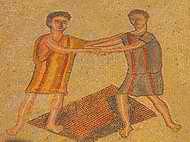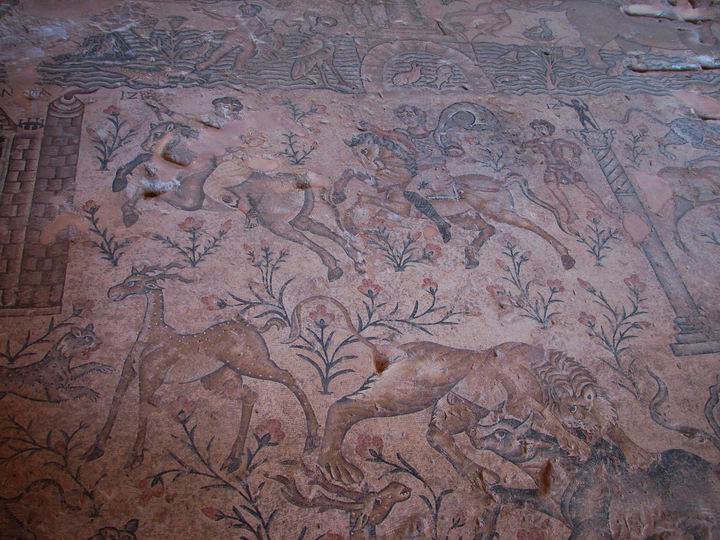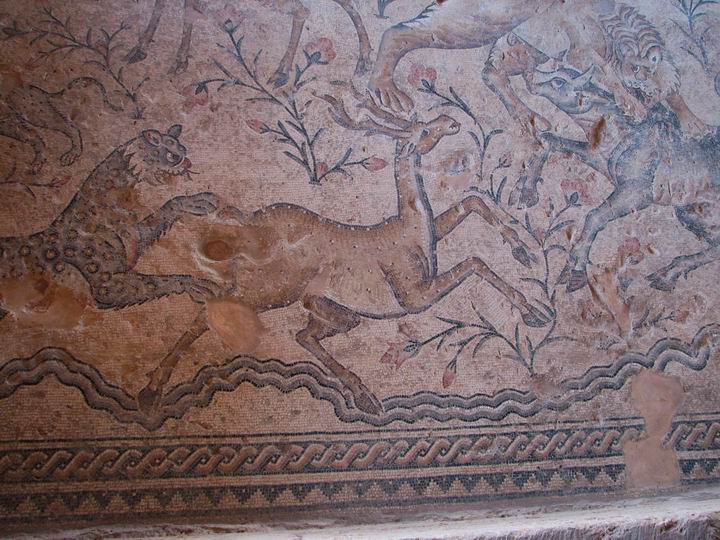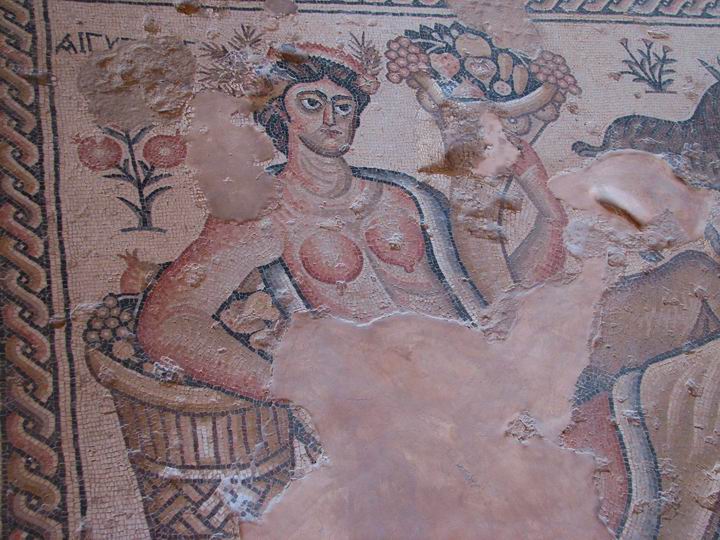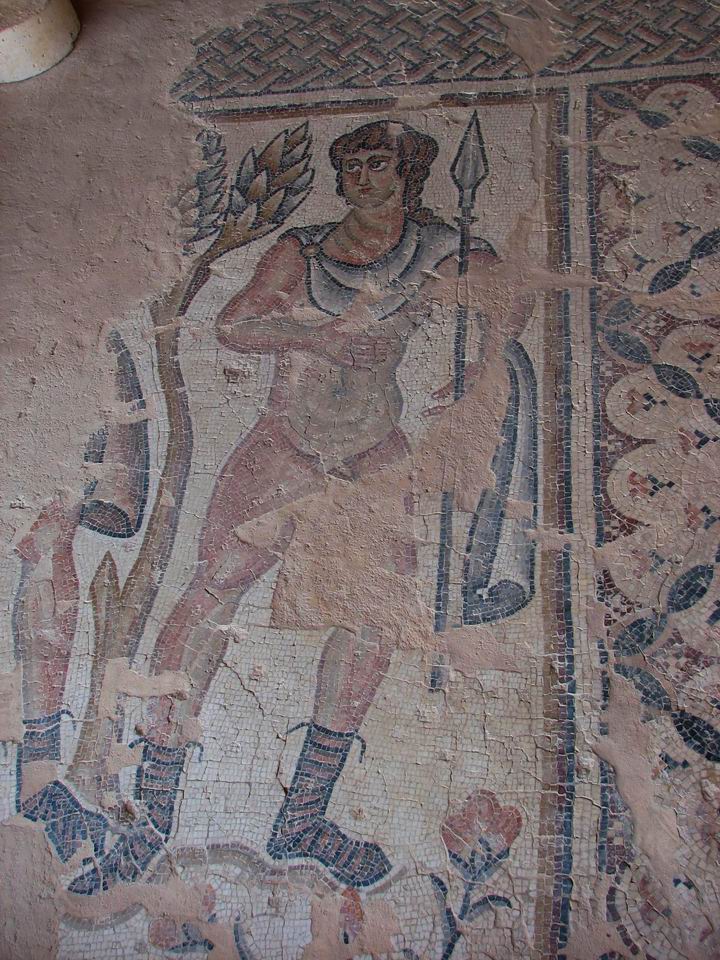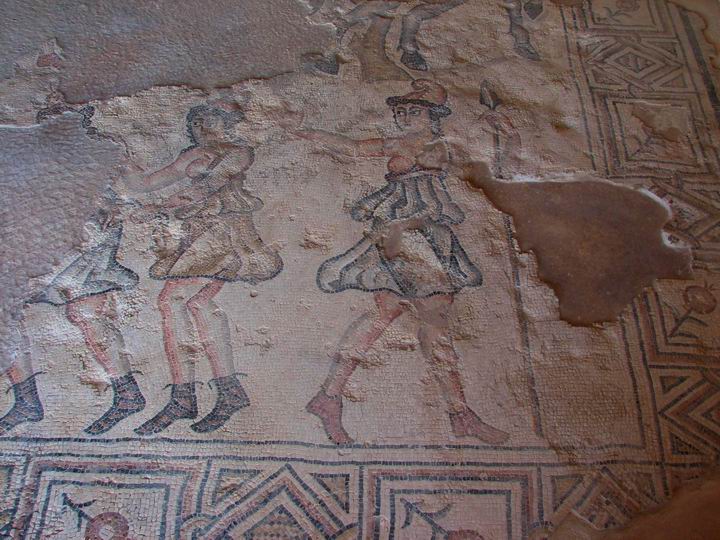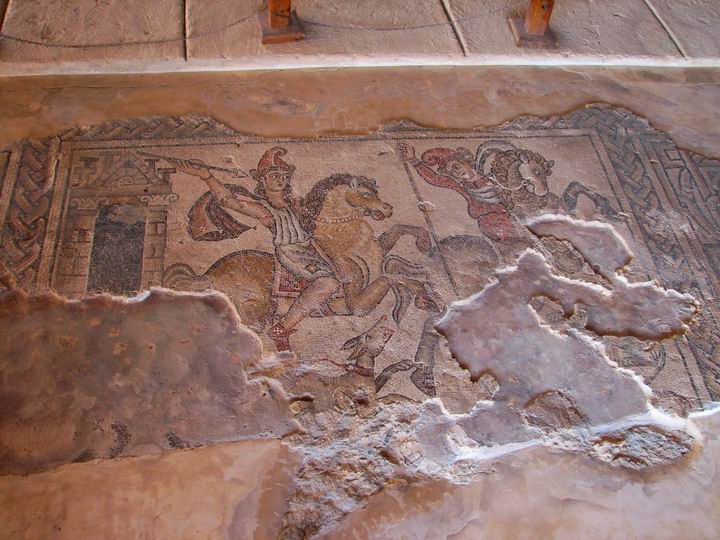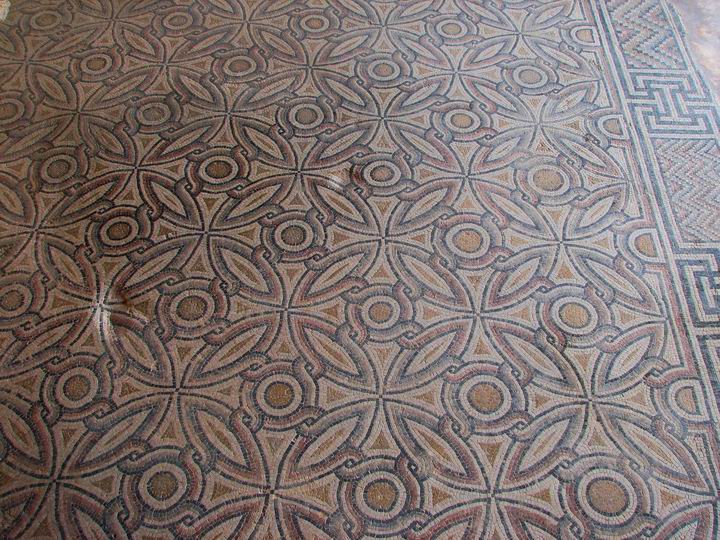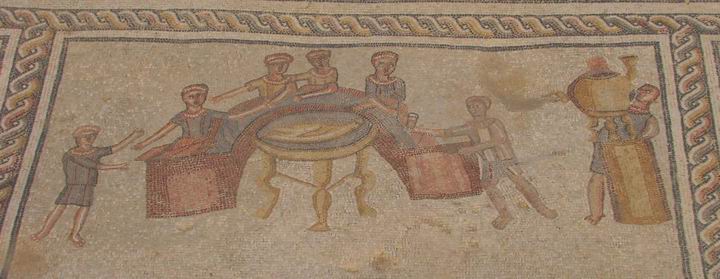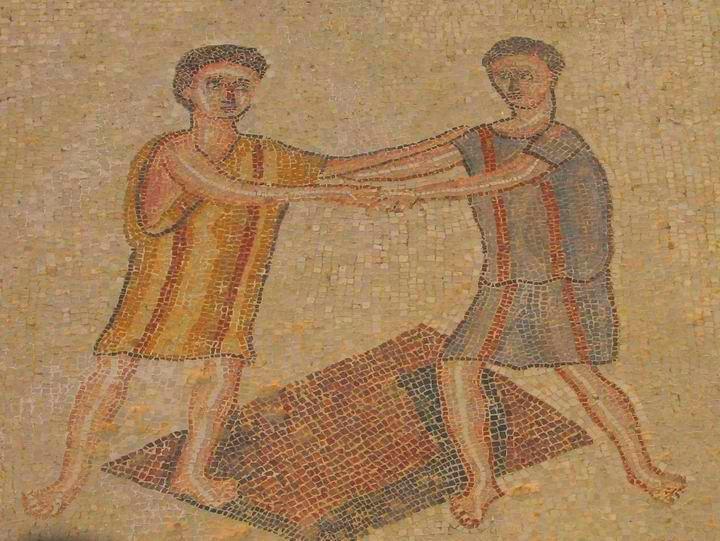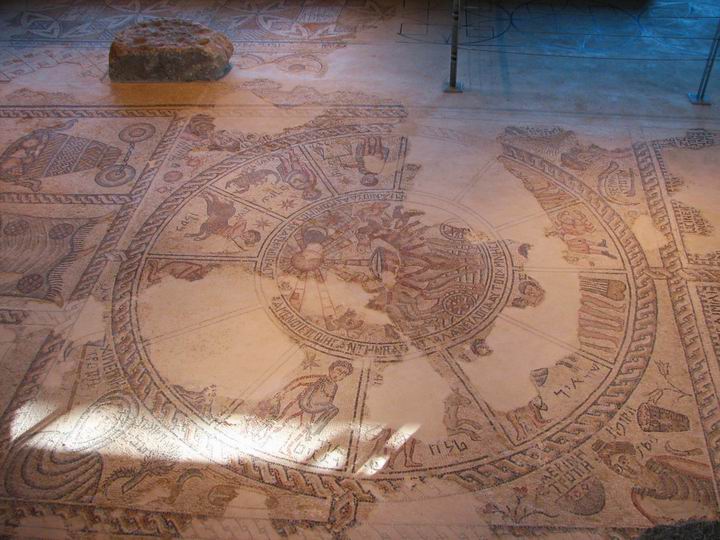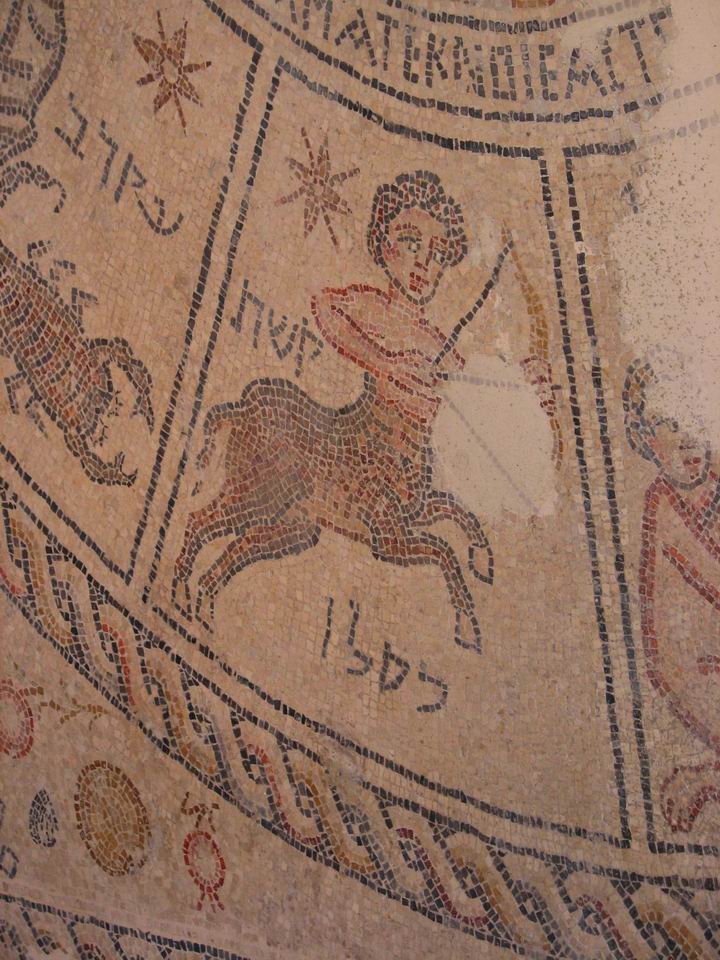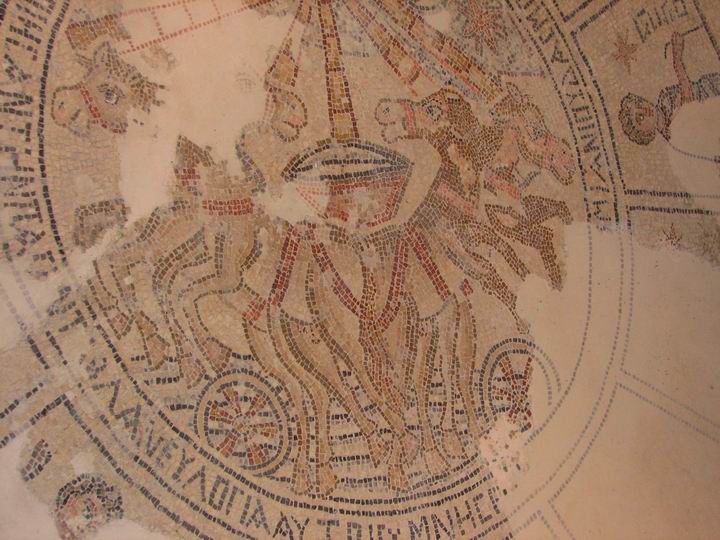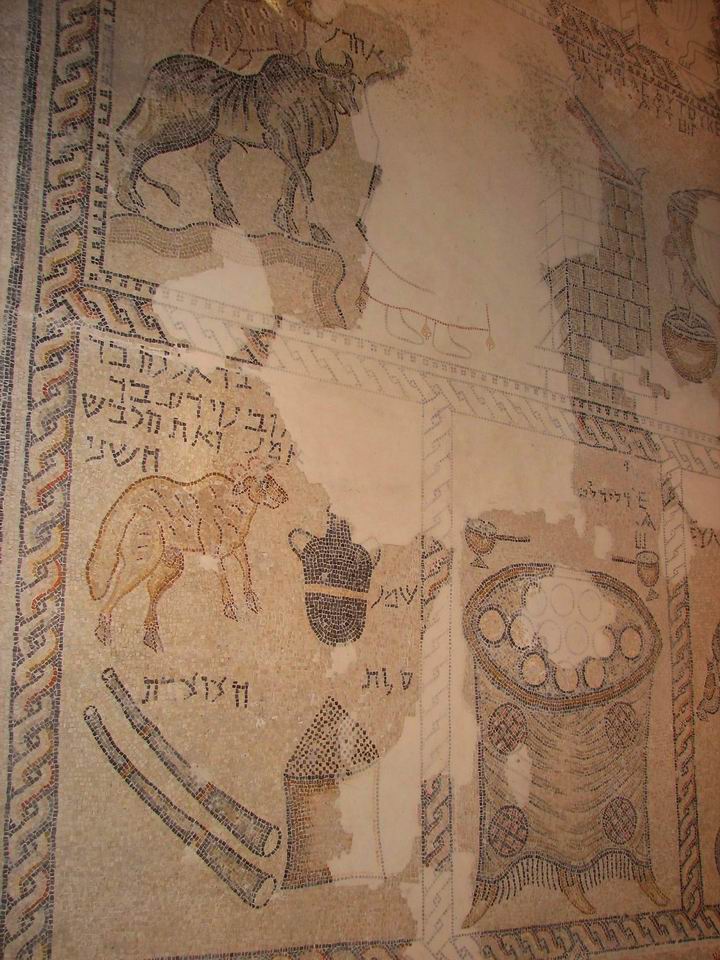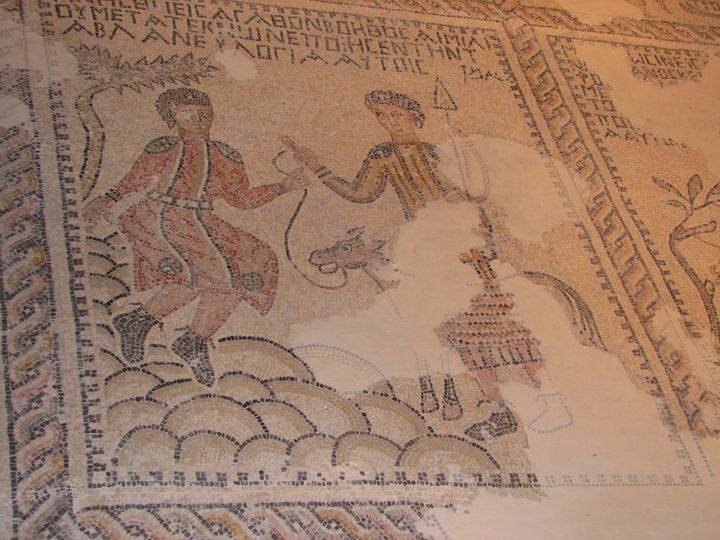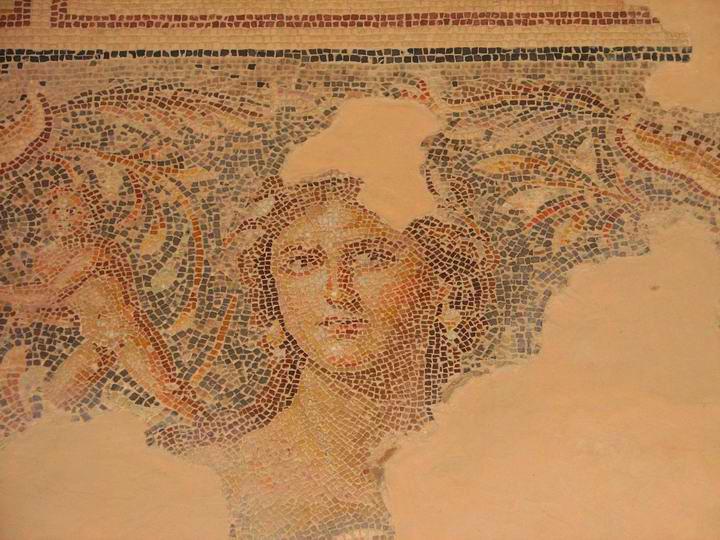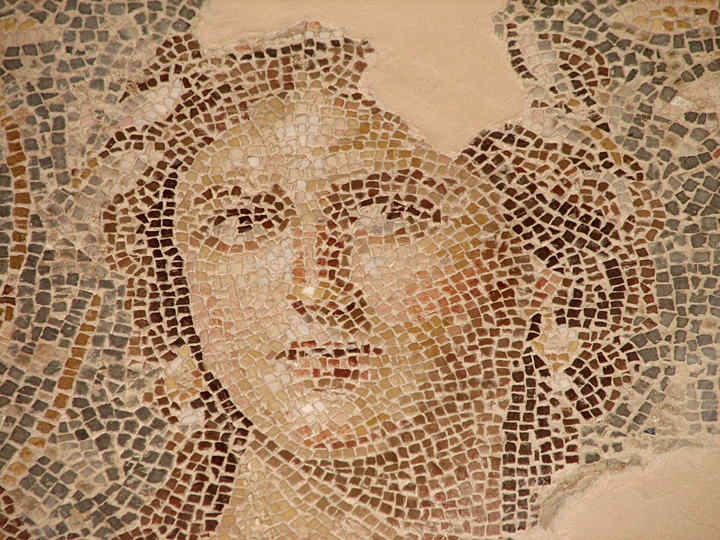This page reviews the magnificent Mosaics found in the Roman and Byzantine city of Lower Galilee.
Home > Sites > Lower Galilee > mosaics of Sepphoris (Zippori)
Contents:
Background
Photos
* Nile house
* Western church/Orpheus
* Synagogue
* “Mona Lisa”
Biblical references
Links
Background:
Sepphoris (Zippori) was a major Roman and Byzantine city, the capital and heart of the Galilee province. It is reviewed in another page.
A sample of its rich mosaic floors is presented here. The mosaics were laid during the Roman and Byzantine periods – 2nd to the 7th century AD. They were laid out in public streets, public buildings, synagogues and villas. Their colorful decorations made this ancient city unique – rightfully deserving the title of the “diamond of the Galilee”.
Photos:
All photos by Tuvia Liran.
(a) The Nile house
On the south side of the city, and east to the Cardo, is a large building called the “Nile house” – named after one of its amazing mosaics that depicted scenes from the Nile. The name of the mosaic artists are written on a mosaic inscription (naturally…) on the side of the Cardo, at the entrance of the house.
The photo below is a section of the floor, showing celebrations in Egypt along the Nile after it over flowed, and hunting scenes.
The lower section is detailed below.
A pair of hunters.
The Amazons – the tribe of warlike women – in a celebration.
Another scene of hunting Amazons.
A section with dazzling geometric patterns. Try to follow the lines!…
(b) Western church and Orpheus House
The Orpheus house was a 2nd century AD Roman building, measuring 17 x 28M, and located at the middle of the Cardo street. A Church was built on top of its remains at the end of the 6th century AD.
The Mosaics are from the Orpheus House level, and consisted of simple geometric patterns in most of the rooms. However, in the dining room are four panels that show scenes of Orpheus, the divine musician, and of daily life.
Another scene of the Orpheus house mosaics.
(c) Synagogue
Dated to the 5th century, the 15M x 7M building was covered by a magnificent Zodiac mosaic floor, 20 inscriptions in Greek and Aramaic, and scenes from Bible stories. The section of the mosaic floor with the Zodiac is seen below.
This is a detail of the floor, with 2 Zodiac signs illustrated and written in Hebrew letters: the scorpion (Akrab=Scorpio, month of Heshvan) and the bow (Keshet=Sagittarius , month of Kislev).
The center of the Zodiac is seen below, which symbols the cycle of Nature. In this scene is Helius, the Greek God of the Sun, ascending from the sea on a carriage pulled by horses. The carriage is empty and it seems like the sun is driving it.
Helios was the Titan god of the sun who presided over the the measurement and divisions of the day, the year and the seasons. It was a common motif in ancient synagogues in Israel, where 7 sites (Beit Alpha, Hammat-Tiberias, Yafia, Khirbet Susiya, Beth She’an, Naaran and Husifa) illustrated the twelve zodiac signs with Helios in a sun chariot, most of them surrounded by angels. You can also check the link below.
The mosaics contain Jewish motifs and depictions of Biblical stories, arranged in rectangular strips. The photo below shows on the top side the consecration of Aaron in the Tabernacle (based on Exodus 29), while the bottom of the section are scenes of the daily offering (bottom left) and shewbread table (bottom right).
The mosaic below is part of the scene of the binding of Isaac. The two young men depicted in the painting were part of the story, when Abraham told his men to wait with the donkey, as seen in this painting (Genesis 22:16-17): “And Abraham said unto his young men, Abide ye here with the ass; and I and the lad will go yonder and worship, and come again to you.” On the right side is a part of the scene of Abraham and Isaac at the place of the altar, but that section was damaged.
(d) “Mona Lisa”
One of the famous findings in Zippori is the “Mona Lisa of the Galilee“, that was discovered in the banquet hall of the Dionysus building. The mosaic, shown below, is located in the central panel and portraits a beautiful woman.
A closer view of the face is shown below. This illustration of a beautiful young lady may have been of Venus, the Roman Goddess of Love, as there is a cupid on her left side. A similar mosaic was found in Pompeii, with a cupid on the left.
Biblical References:
(a) Exodus 29 38-44
This text is the basis for one of the Mosaics in the Synagogue.
“Now this is that which thou shalt offer upon the altar; two lambs of the first year day by day continually. The one lamb thou shalt offer in the morning; and the other lamb thou shalt offer at even: And with the one lamb a tenth deal of flour mingled with the fourth part of an hin of beaten oil; and the fourth part of an hin of wine for a drink offering. And the other lamb thou shalt offer at even, and shalt do thereto according to the meat offering of the morning, and according to the drink offering thereof, for a sweet savor, an offering made by fire unto the LORD. This shall be a continual burnt offering throughout your generations at the door of the tabernacle of the congregation before the LORD: where I will meet you, to speak there unto thee. And there I will meet with the children of Israel, and the tabernacle shall be sanctified by my glory. And I will sanctify the tabernacle of the congregation, and the altar: I will sanctify also both Aaron and his sons, to minister to me in the priest’s office”.
(b) Genesis 22 5
This text is the basis for the left detail of the binding of Isaac:
“And Abraham said unto his young men, Abide ye here with the ass; and I and the lad will go yonder and worship, and come again to you”.
Links and References:
-
Astrology:
-
Greek Mythology:
-
Helios – the Sun God
-
Orpheus – The greatest of all musicians
-
Amazons – warrior women
-
Mosaics
-
Sepphoris – Great Roman/Byzantine city
BibleWalks.com – Let the Bible be your tour guide
Sepphoris <<<—previous site—<<<All Sites>>>—next site—>>> Shimshit
This page was last updated on Nov 1, 2014 (Added Mona Lisa)
Sponsored links:
